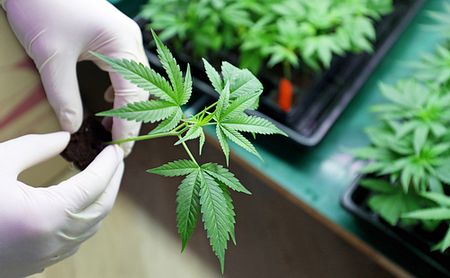CBD Treatment Found Effective for Severe Seizures in Batten Disease Case
Written by |

Cannabinoids were used to successfully treat seizures in a patient with Batten disease for whom conventional therapies alone failed, according to a case report, suggesting that cannabinoids should be investigated further as a possible seizure treatment.
The report, “Successful treatment of cannabinoid administration against refractory epilepsy in Batten disease: a case report,” describes the case of a 25-year-old male with Batten disease, who was admitted to a hospital in Cyprus for severe seizure activity. It was published in the journal Neurological Sciences.
Before being admitted to the hospital, the patient had been having eight to 12 seizures per day, which had increased to 50 per day at the time of admission.
The patient’s brain scans and lab tests were normal, although an electroencephalogram (EEG), which measures electrical activity within the brain, showed a high seizure susceptibility.
Prior to admission, he had been taking 1,000 mg of Keppra (levetiracetam) twice a day, 400 mg of valproic acid (sodium valproate), and 125 mg of Lamictal (lamotrigine). He also used zonisamide (100 mg in the morning and 150 mg at night) and 10 mg diazepam suppositories as needed.
All medications were administered through a percutaneous endoscopy gastrostomy (PEG), which is a feeding tube inserted into the stomach.
Doctors initially administered intravenous (IV) diazepam, but by day seven, his seizure frequency grew to 80 per day and he was transferred to an intensive care unit.
There, the patient was intubated and sedated with a mixture of propofol, midazolam, and fentanyl.
Physicians switched his Keppra and valproic acid to IV administration rather than via PEG and added IV phenytoin three times a day. He continued to receive Lamictal and zonisamide through the PEG.
Despite these measures, his seizures continued at 60 per day, with up to 10 episodes of five to 45 seconds each, occurring within an hour.
At 22 days, his seizures were still uncontrollable, despite receiving a tracheostomy — a tube surgically placed through the neck into the windpipe to assist with breathing — and increased sedatives and anti-epileptic treatment, including the addition of Onfi (clobazam).
Seizure activity continued despite the addition of phenobarbital and then worsened when the patient developed a respiratory infection and fever, although this was successfully treated with antibiotics.
On day 27, when an EEG detected a seizure while the patient was on mechanical ventilation, specialist consultants advised palliative care, used to provide comfort in life-threatening cases lacking effective remedies.
At this point, the patient’s parents, having read the available literature, requested cannabinoid treatment be included in their son’s therapy.
Approval was given, and treatment began with two drops per day of a solution (from Tilray Canada) containing 25 mg/mL of delta9-tetrahydrocannabinol (THC) and 0.5 mg/mL of cannabidiol (CBD). CBD is the non-psychoactive compound derived from the cannabis plant, while THC is the compound that causes mind-altering (psychotropic) effects.
This dose was increased by one drop per day for five days, at which point the seizures began to decline. As the treatment progressed, the patient steadily ceased sedatives and mechanical ventilation.
Eight days into cannabinoid therapy, the formulation changed to two drops three times a day of a 3% CBD oil, with a gradual dose increase.
Seven days later, he began a regimen of a 10% CBD oil and a THC oil with an initial dose of 10 drops each three times per day via PEG (equivalent of 2.5 mg/kg/day CBD and 0.15 mg/kg/day THC).
Seizure activity steadily decreased, allowing the patient to stop taking midazolam.
Three weeks after starting cannabinoid treatment, the patient was convulsion-free and could stop taking diazepam and Onfi while gradually decreasing phenobarbital.
At 60 days, he was mobile in his wheelchair and continued breathing on his own via the tracheostomy. After remaining seizure-free, he was finally discharged on day 73.
At the time of discharge, he was prescribed 17 drops of 10% CBD oil and 11 THC drops four times daily (equivalent of 5.6 mg/kg/day of CBD and 1.4 mg/kg/day of THC); 1,500 mg of Keppra, 400 mg of valproic acid, and 100 mg of zonisamide twice daily; and 90 mg of phenobarbital three times per day via PEG.
Antiepileptic blood levels and liver function tests were stable after starting the cannabinoid treatment.
He remained free of seizures except for sporadic myoclonic jerks in his palms over the next three months.
His THC, valproic acid, and phenobarbitol doses continued to decrease, and six months after discharge, he was weaned off zonisamide and the tracheostomy was removed.
“The case of our patient with refractory epilepsy in Batten disease confirms the effectiveness of cannabinoids in refractory epilepsy,” the authors wrote. “Further experimental studies in the spectrum of neuronal ceroid lipofuscinosis disorders are required to validate these findings.”




